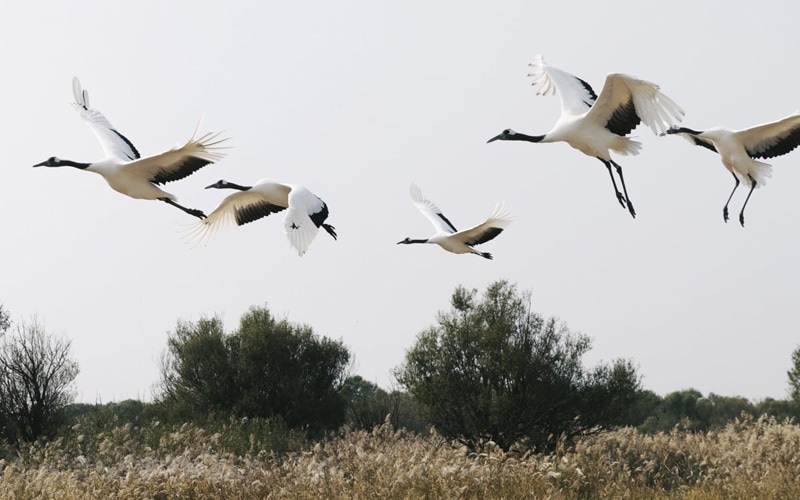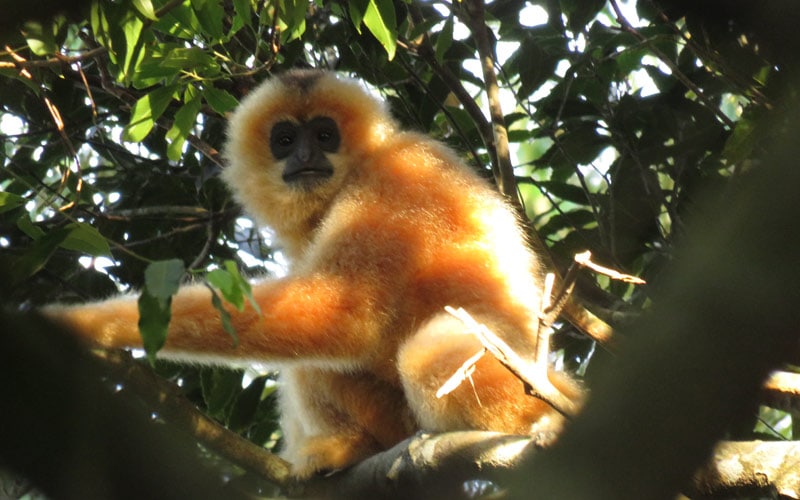Guardians of the Highland Spirits
At Three-River Source, the sources of the Yangtze River, Yellow River and Lancang River converge, which has earned it the name "Water Tower of China". This area is made up of the world's highest-altitude and largest plateau wetland ecosystem. Rare snow leopards and Tibetan antelopes can be seen in the region, alongside up to 84 kinds of wild animals that are under state priority conservation including kiang, wild yak, white-lipped deer, and black-necked crane. The area is vitally important to China's biodiversity as well as the country's speciation and evolution. More recently, the area has seen the application of digital technologies in support of local environmental protection, highlighting the value of coexistence between technologies and Nature.
Protect the Three-River Source Through Familiarity with Local Conditions
Three-River Source National Park was established to protect China's vital ecological shield and wild species across the plateau. To protect the Three-River Source, we must first familiarize ourselves with local conditions and obtain real-time information on wildlife in the region. The total area of Three-River Source National Park is 190,700 square kilometers. This huge area and the complex landscape present a number of challenges to manual ecological environment monitoring. Such challenges include slow response, high costs, and narrow coverage, creating an urgent need for more advanced ecological environment monitoring networks.
Three-River Source National Park has been gradually introducing advanced technologies such as big data and optical networks. Based on monitoring requirements regarding key areas, key species, and important ecosystems, pilot monitoring projects have gradually been carried out for animals that are under protection, such as Tibetan antelopes, as well as for natural features like glaciers and mountains. Furthermore, technical solutions are being explored to enhance monitoring in unmanned areas. All of these efforts have contributed to the construction of an ecological big data center for Three-River Source National Park as well as the comprehensive monitoring network system that covers Three-River Source.
Taking migration protection of Tibetan antelopes as an example, from May to August each year, Tibetan antelopes pass through Wudaoliang, along the Qinghai-Tibet Highway to calve at Zhuonai Lake in the hinterlands of Hoh Xil. "At Wudaoliang Protection Station, we can use the ecological monitoring system to comprehensively monitor the Qinghai-Tibet Highway, which stretches for more than 80 km in the area, accurately predict the route of Tibetan antelopes, and perform traffic control at crossings in advance, ensuring smooth migration." said Karma Shenpen, the deputy director of Wudaoliang Protection Station. Tseso Gyal, the deputy director of Zhuonai Lake Protection Station, states that the ecological monitoring system means rangers no longer need to worry about disturbing the antelopes when they are calving. That's because the real-time distribution and calving of the antelopes can be accurately checked from the comfort of the protection station.
Network Technologies Facilitate Ecological Monitoring
Until now, with data sharing, the number of ecosystem monitoring sites, which provide HD video, deployed at the Three-River Source has risen to over 1,000. This enables the long-distance, large-scale, and all-round real-time monitoring of ecology, landscapes, and wildlife in typical areas.
To meet the big data collection, backhaul, analysis, and processing requirements of the Three-River Source ecological monitoring system, China Mobile Qinghai is working with Huawei to build green all-optical networks featuring high bandwidth and low latency. The networks can connect scattered ecological monitoring sites and quickly transmit all-weather real-time monitoring data to the Xining computing center without loss, enabling aggregation and analysis of ecological data. Data is also collected on the quantity of rare species in the area, such as Tibetan antelope, snow leopard, and Tibetan fox, and their related behaviors are analyzed.
Three-River Source Ecological Protection Achieves Remarkable Results
The Three-River Source National Park ecological big data center’s ecological monitoring has led to remarkable results: A resource background data platform has been established; a white paper on natural resource background has been released; a wildlife background survey report of Three-River Source National Park has been completed; and a list of terrestrial vertebrate species in Three-River Source National Park has been released for the first time. Detailed information is also being provided on the distribution of species that are under protection, including the Tibetan antelope, wild yak, blue sheep, snow leopard, Tibetan fox, kiang, and black-necked crane, providing basic data for wildlife protection.
After years of unremitting efforts, ecological protection in Three-River Source is bearing fruit. Wildlife populations in the area have increased significantly, with the number of Tibetan antelopes alone increasing from less than 20,000 in the 1980s to more than 70,000 today. Moreover, 24 kinds of wildlife that are under national first-class protection, including snow leopards, have been detected in the region. The ecosystem has also improved, with water conservation increasing by more than 6% annually and desertification being reduced. Moreover, grassland coverage and grass yield have increased by 11% and 30% respectively compared with 10 years ago.
Moving forward, Three-River Source will undertake the vital mission of protecting "Water Tower of China", and help Three-River Source National Park improve local ecological governance. In this way, the ecological environment in "Water Tower of China" can be improved, contributing to a beautiful homeland.








